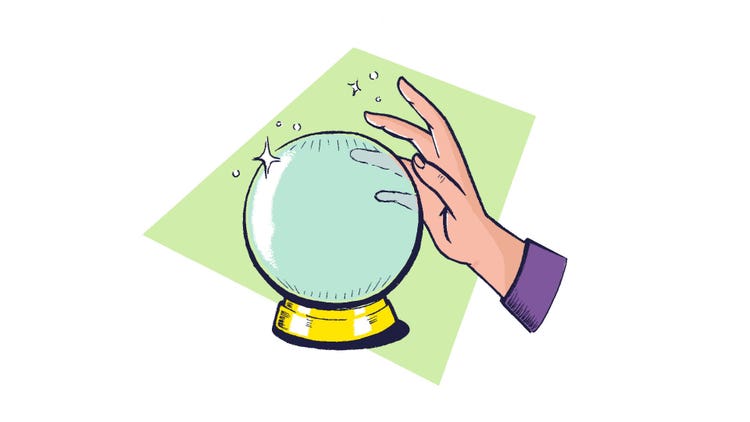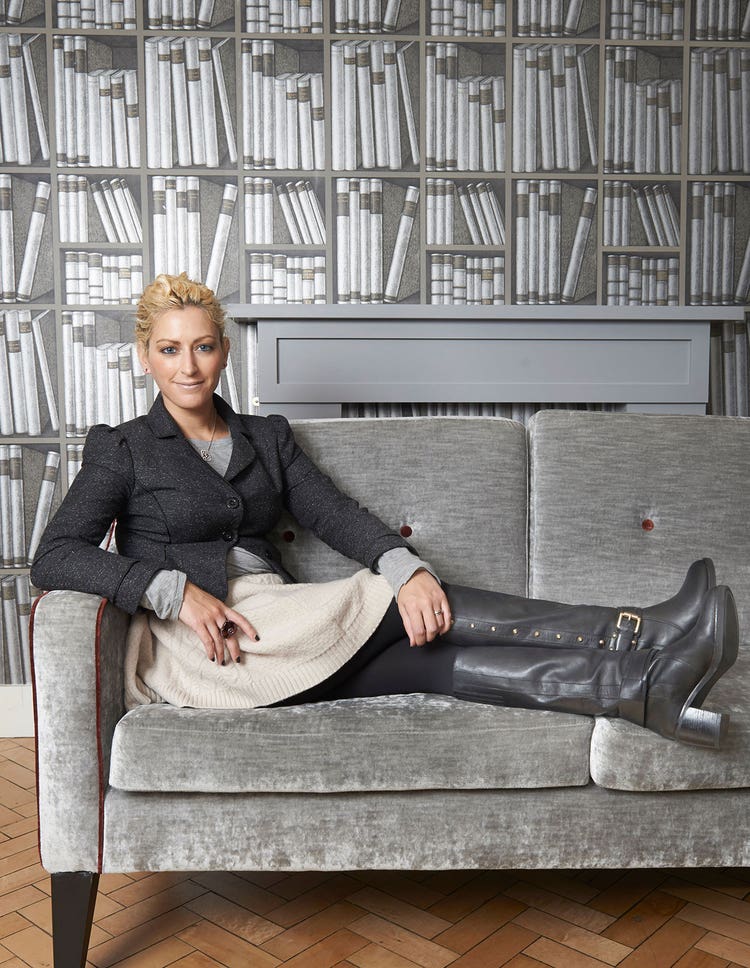How to Think Like a Futurist


To create something new or to make a change in your own life, you first have to be able to imagine how things can be different. And the future is a place where everything can be different.
I teach a class at Stanford University’s Continuing Studies program called “How to Think Like a Futurist.” On the first day of class, I always challenge the students to try to stump me and my fellow researchers at the Institute for the Future. I ask them to come up with a list of things they believe will not change in the future, things that are true about how the world works today that they believe will still be true 10 years from now. For example: Humans will still need oxygen to breathe, or countries will always have borders, or my favorite one that I hear most often is about human reproduction: It takes the DNA of two people to make a baby, one man and one woman. That’s been true for 3 million years. It definitely will be true for the next 10.
Whatever my students come up with, I promise I’ll take their ideas back to my colleagues, and we’ll try to prove them wrong. We’ll look for clues that, in fact, those things that seem un-changeable might already be changing. Because if there’s one thing futurists know how to do, it’s how to keep an open mind that literally anything can become different.
And what do you know? Just last fall when I was teaching this class, a few weeks in, a news headline came out: The first “three-parent” baby was born, using a new experimental method that’s legal only in a few places in the world. It’s called pronuclear transfer, and it combines the genetic material of two women and one man to make one baby, with three genetic parents. This method is already being used today primarily to help parents avoid passing on genetic diseases.
Now you may not be a geneticist, and you may not be thinking about having a baby, but this kind of thing is worth paying attention to. It’s a mental habit of actively challenging what you believe could or could not be different. You have to get yourself unstuck about what you think is possible, by always looking for evidence that literally anything can change, even something that has been true for all of evolutionary history up until now.
This habit of unsticking your mind is incredibly important. It’s the basis of all creativity and personal reinvention. And professional futurists have all kinds of exercises for practicing this habit, for helping get our brains unstuck about what we think is possible, what we can believe can be different. Here are three of these exercises that you can practice anytime, anyplace to strengthen your own powers of imagination.

Exercise #1: Predict the past

Where are you right now? Earlier today, you made a decision to be where you are, doing what you’re doing.
But what if when you woke up today, you had decided to do something different? What if, on the spur of the moment, you’d decided to make a different plan for today? In this alternate version of reality, where might you be right now, what might you be doing instead? What choice did you make?
Picture this alternate reality as vividly as you can, as if you had really made this different decision. Close your eyes and try to see yourself in a different place. What are you doing? Why did you choose to do this instead? How do you feel about this alternate version of your day?
This is a technique that futurists often use called “predicting the past.” You look back at something you’ve actually done in your life, a decision you made or an action you took. And then, you imagine that instead of making that choice, you made another one instead. You can think about little daily decisions, like you just did, or bigger ones, turning points in your life, like: What if I hadn’t moved when I did? What if I had taken that job or opportunity I turned down?
This technique is focused on the past, but it’s useful to futurists because it helps us see how our present reality could have been different. It wasn’t inevitable that it turned out this way. And if the present wasn’t inevitable, then the future isn’t inevitable, either. We can make decisions today that will shape it to be something different, just like we made decisions in the past that shape our present.
Exercise #2: Remember the future

This time, you’re going to try to imagine yourself doing something you have never done before, something you’ve never in your life even considered doing up until right this very minute. And to come up with this previously unimaginable future, we’ll use the X-Y-Z method. Here’s how it works.
X is something you love to do. It can be anything—reading, painting, dancing, cooking. Just pick ONE thing you love to do, and that’s your X.
Y is a person you care about—anyone you know at all, as long as they’re still living. Pick a Y.
Z is your favorite faraway place, somewhere you’ve actually been at least once in your life. Pick a Z.
OK, now imagine it’s one year from today. You are doing X with Y in Z. You are doing the thing you love to do with the person you care about in this favorite faraway place. Can you imagine it? Try to see it in your mind like a movie, as clearly as if it has already happened and you are replaying it in your mind like a favorite memory.
This is a technique called “remembering the future.” You take activities and people and places that you already have some real-life experience with, and then you combine them in ways that are unfamiliar, unexperienced. And then you try to picture yourself doing this thing you’ve never done before as vividly as you can. And you get bonus benefit if you can come up with a plausible explanation for how this strange future could come to pass. What logical turn of events could take you to this place, with this person, to do this thing?
Often, it can be hard to come up with a plausible explanation for a randomly generated possible future. But something interesting about this technique is that every time you remember a future that has never yet happened, you rate it as more likely to happen. That’s because picturing something vividly in your imagination creates something similar to a memory in your mind. When you try to imagine it again in the future, your brain can conjure it up faster—it has a memory of thinking of it before. And your brain says, well, if it’s easy to imagine, it must be possible!
So this is a powerful habit to cultivate—because it strengthens your ability to believe that things that have never yet happened are possible to happen in the future. And the more ways you can imagine how the future could be different from the things you’ve already experienced, the better you’ll be at envisioning change when you need it most.
Exercise #3: Hard empathy

Finally, you’re going to imagine yourself experiencing something you find it very hard to relate to, something that feels so different from your own life that it’s almost unimaginable. The easiest way I’ve found to do this is to go to any news source and look for a story about someone experiencing something I’ve never personally experienced. For example, I recently read a story in The New York Times about two young women, sisters, living in rural India. The village they live in is so conservative, that whenever the young women go into the nearest city, their male cousins and uncles create a human chain around them, their big hands linked, to protect them from any contact with outside men.
I’d like you to imagine what it would be like if, in your daily life, wherever you live right now, you were expected to live by these customs. What if you were expected to allow relatives to create a human chain around you whenever you go somewhere you might encounter strangers? Or what if you were expected to be the one holding hands and creating that human chain of protection for someone else? This will be hard, most likely, but can you at least try to picture it—even if it seems unbelievable, unimaginable—can you imagine yourself living by these rules in your own life, going to work, or school, or traveling this way? And what that might feel like?
This skill you’ve just practiced, it’s called “hard empathy.” It turns out there are two kinds of empathy. The first kind, the easy kind, happens when we can relate to what someone else is feeling, when we’ve gone through the same thing ourselves, we have direct experience of it, so our minds and bodies can easily conjure up what someone else might be feeling. And that kind of easy empathy, it’s like a shared emotion, we can feel it because we’ve felt it before. But hard empathy, that’s a more creative kind of empathy. It’s what we have to conjure up when we don’t have any personal experience with what someone else is going through.
When we have no firsthand details to draw on, when we have to make that imaginative leap to see whether we can try to understand what someone else’s life might be like, that’s hard empathy. And when we can make that leap, when we can feel in our own minds and bodies how someone else’s life could be different from ours, we get unstuck, and we get better at thinking about change. Because if someone else can live a life completely different from ours today, then it’s possible we ourselves, and anyone around us, can lead a completely different life tomorrow.
The triangle of “what if”

These three mental habits you’ve just learned and practiced—predicting the past, remembering the future and hard empathy—I call them the triangle of “what if.” And you can use this triangle anytime you want to be more creative or flexible in your thinking. Not only are these techniques fast and fun, they’ve also all been linked in the scientific literature to increased innovation, open-mindedness, inventiveness and capacity for change. And that’s because, at their core, they are all techniques for building your capacity to imagine how things could be different.
To create something new or to make any kind of change, you have to be able to imagine how things can be different. Remember: The phrase “make a difference” literally means to make something different. And that’s the true power of thinking like a futurist: You develop the power to make your future different—whatever you want that difference to be.
Video credit: vesperstock, Adobe StockPhoto credit: vesperstock, Adobe Stock; Geraint Lewis, Alamy Stock; Flamingo Images, Adobe Stock; Wavebreakmedia, Thinkstock; Felix Russell-Saw, Unsplash; peshkova, Adobe Stock